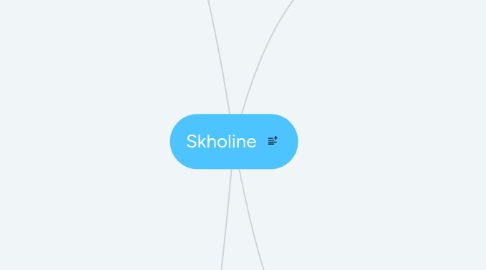
1. v 1.1
1.1. Unique offering?
1.1.1. Best / Top of the range curriculum delivery methods & materials
1.1.1.1. Curate content from free & premium sources
1.1.1.1.1. online video tutorials
1.1.1.1.2. online courses
1.1.2. Tech savvy and progressive teachers who use latest teaching methods & materials
1.1.2.1. Teaching method: Group learning as opposed to teacher spoonfeeding the information
1.1.2.1.1. New experiments in self-teaching | Sugata Mitra
1.1.2.2. Online Spelling tools
1.1.2.2.1. dictator - English spelling dictionary
1.1.3. Focus on applying knowledge rather than just acquiring it
1.1.3.1. Examples
1.1.3.1.1. Doing a business presentation as opposed to just cramming business principles
1.1.3.1.2. Building a robot instead of just learning physics principles
1.1.3.1.3. Doing a book review
1.1.3.2. Grading should represent this... 50% of the grade to be exams, the rest is based on applying knowledge:
1.1.4. Focus on real world skills - to become a productive member of society
1.1.4.1. by 14 or 16years old students should be in a position to engage with real professions not just soley focussed on the general subjects.
1.1.4.1.1. this will give them a head start
1.1.4.1.2. It will help them make more informed life / career choices
1.1.4.2. Some professions have no age/license restriction
1.1.4.2.1. IT / Tech: programming, data scientists etc
1.1.4.2.2. Photography, animation, videography/production
1.1.4.3. For those that do, there are ways of simulating this:
1.1.4.3.1. Forex trading / investment simulators
1.1.4.3.2. Medical surgery simulators
1.1.4.3.3. Pilot simulators
1.1.4.3.4. Engineering, Architecture, Interior design etc.
1.1.4.4. Get mentors to guide students
1.1.4.5. presentation skills
1.1.5. Tech first phylosophy
1.1.5.1. Strong tech team to ensure use of the best tools
1.2. target market
1.2.1. Families that can afford a stable internet connection + laptop / tablet + school fees
1.2.2. Start off with Secondary Schools.
1.2.2.1. Primary and Pre-primary have a lot more complexities around student engagement and physical activities.
1.3. Platform(s)
1.3.1. Use available platforms
1.3.1.1. multiple simulators
1.3.1.2. Teams / Slack for collaboration & interactions for all: teachers, parents, students
1.3.1.3. School administration tools
1.3.1.3.1. examinations, reporting etc.
1.3.1.3.2. Exam question pool
1.3.1.3.3. time tabling
1.3.1.3.4. Example platform: Moodle
1.3.1.4. Consultation & meetings
1.3.1.4.1. Zoom / Teams / Hangouts etc.
1.3.1.5. calendars / timetables
1.3.1.6. SSO - single sign in to ensure easy interoperability of each tool.
1.3.1.6.1. So that you only need one account / email address that can access all the necessary tools!
2. Key questions to ask
2.1. Type of school?
2.1.1. Blended
2.1.1.1. This means a mix of the Brick & Mortar and digital learning
2.1.1.2. I'm in favour of this option for the following reasons:
2.1.1.2.1. Brick & Mortar schools have certain advantages over digital space
2.1.1.2.2. It's easier to get accreditation
2.1.1.2.3. Examination is simpler e.g. get everyone in an exam hall that's easy to monitor
2.1.2. Fully digital
2.1.2.1. science experiments can be substituted by 3D simulations e.g. with pilot simulators
2.1.2.1.1. PhET Interactive Simulations
2.1.2.1.2. Virtual Lab | Praxilabs 3D Simulations of Science | Praxilabs
2.1.2.2. How do you handle examinations?
2.2. Commercial Strategy?
2.2.1. Subscription based
2.2.2. A portal to link teachers and students/parents e.g. Uber-like (supply & demand matching)
2.2.3. Sell the platform?
2.2.4. Start an independent school which uses the latest tools?
3. Aim/Objectives
3.1. Disrupt/Digitize learning
3.1.1. I would swap this in favour of "Optimize Learning"
3.2. Flexibility to:
3.2.1. Students
3.2.1.1. ability to log in to access material & content whenever
3.2.2. Teachers
3.2.2.1. Ability to clock in hours taught and essentially get paid by the hour &/or per student
3.2.2.2. They can record lessons and ask students to refer to that material e.g. refer to minute 3:17 in the lesson 8 video.
3.2.3. Parents: Do they actually gain flexibility?
3.2.3.1. Yes
3.2.3.1.1. Don't need to drop children off to school daily
3.2.3.1.2. Homeschooling parents stand to benefit and find this quite attractive
3.2.3.1.3. The family can move location e.g. Nairobi to New York but still continue with the education.
3.2.3.2. No
3.2.3.2.1. Parents like the freedom of not having to look after their children during school hours / days. Digitizing the entire experience forces them to be more engaged and essentially ties them up instead of offering freedom / flexibility.
3.3. Recognized / accredited system/school/platform
3.3.1. I believe that this may be the secret sauce
4. Platform 1.0
4.1. Components
4.1.1. Digital Library
4.1.1.1. Able to rent / buy books
4.1.2. Classroom
4.1.2.1. Curriculum delivery via video
4.1.2.1.1. Offline Video tutorials or live teacher recordings to mimic the brick & mortar classroom setup.
4.1.2.2. Time table portal
4.1.2.3. Discussion groups
4.1.3. Monitoring & Evaluation
4.1.3.1. How would examinations be done?
4.1.3.1.1. All meet in a physical place?
4.1.3.1.2. Would exams be written as with the rest of the B&M schools?
4.1.4. Teacher verification
4.1.4.1. Teachers upload their credentials
4.1.4.2. Parents able to view teacher's track record & thus inform their decision to choose one teacher over another
4.1.4.2.1. I figure that therefore each teacher may have a different hourly rate?
